 |
|||||||||||||
|
 |
|||||||||||||
|
1. Starting Project: Transportation Safety
Effective measures of safety, including LED technology and information sharing via smart car/road/diver interactions, are lacking development. The purpose of this project is to determine new applications of existing technology and to invent new methods for improving the safety of drivers, runners, police officers, road side emergencies, and people who are in wheelchairs and drive scooters. The project might include the application of LED lights to police uniforms, running gear, and small vehicles (scooter, wheelchair, skateboard), or inventing new methods for car/driver/road interactions (new road signs, smart roads).
2. Statement of the Problem
Transportation Safety: There is a lack of communication (information sending and receiving) while traveling between cars/roads/divers.
Particulars of the problem: There is too much/diverse information to send and receive and too few mechanisms to do so. So, there is little information available during travel in comparison to what is actually occurring in the world around us. There is a time lag between the occurance of an event and our knowledge and reaction to it. Other problems that exist include distractions, lack of completely hands free system, and sleepy/impaired drivers.
3. Scale of the Problem
There is an average of 6 million car crashes on US roads annually
There are 3 million injured 2 million permanently injured annually
40,000 deaths a year
National Highway Traffic Safety Administration (NHTSA)
4. Existing Communication - information transfer
Neurons
cells (bacterial horizontal gene transfer when cells are near one another)
skin (sensors that go to the brain for processing and cause an action)
Osmosis
Radar
Satellite
Cellular telephones
GPS
Senses
Social Media (Radio,News)
5. Areas of innovation in transportation
Signals that can be used to provide information to car/road/driver:
Sudden reduction in speed
Extreme traveling speeds
Divergence of normal path (pulling over, sudden divergence and return to normal path, repeated divergence of normal path like an impaired driver)
Location of vehicle upon incident
weather conditions
Needs Improvement:
Diver reaction time
Diver sobriety
Driver alertness (awake)
Universal/automatic onstar
Information of people, number and make of vehicles, speed upon incidence involved in an accident to emergency response teams
6. Game Storm

Combinatory Scenarios:
A. Road goes out - flood, bridge collapse (road emergency on road itself)
Road emergency
Send to human or auto receive information from humans automatic
Lite Version: road tells emergency personnel
Full Version: road tells A.I. machine
Signs and signals - arrive before cops automatically
IDEA: stop traffic lights, divert traffic
IDEA: Have the road filled with internal sensors for skid marks
B. Road - wreck
car sends signal-airbag deployment (signal to the road does not exist)
all cars transmit a signal when airbag deploys Ex: to road including your global positionins
Lite: road tells emergency personell (position of accident, drivers involved (ID/insurance/registration), number of cars/persons involved, VIN of every car involved, level of accident, speed at which accident occurred etc.) tells personnel how to prepare before they arrive at the accidenr
Full: eliminate emergency personnel and the road takes counter measures
road tells A.I. (avoid Onstar)
IDEA: have rail guard like things come out from the sides of the road to move 90° and block off the road-place every 10m
-wont work because there may be an accident between the 10m or right in front of the rail guard things and would be very expensive to add on to roads
NEW IDEA: have little cars driving around at all times that block off the road and have emergency kits
C. Car determines driver impairment
Car determines impairment - using deviations from standard facial movements, from standard driving patterns (swerving, speeding, driving too slow)
Car talks to driver - asks are you okay? Are you sleepy? Are you impaired?
Car makes suggestions based on answers - there is a coffee shop X miles away, maybe you shouldn't be driving and should pull over and phone a friend, would you like me to contact emergency personnel?
Car takes action based on answers - car stops driving, car turns on flashers, car writes on back DUI, car calls police, car calls an emergency response team
7. Visualization
The goal of this visualization was to watch scenarios involving car/diver/road interactions for the purpose of making a story board for a concept video. The most important aspect of this visualization was to think of new methods to solve traffic safety problems.


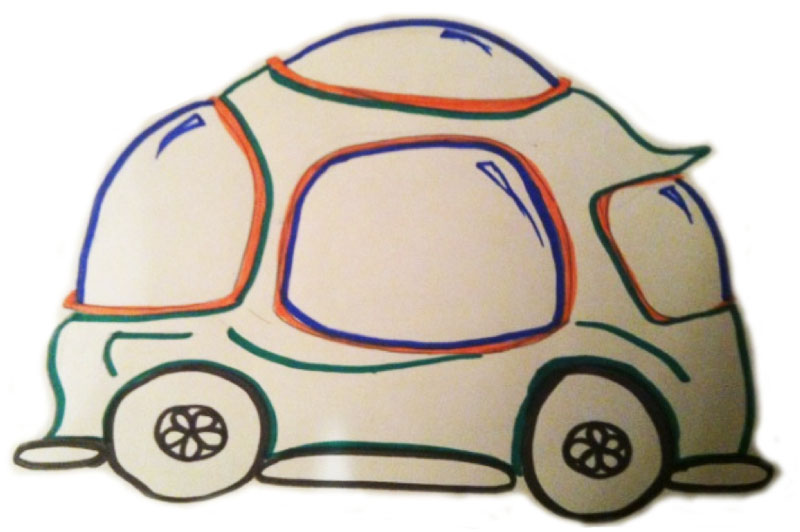
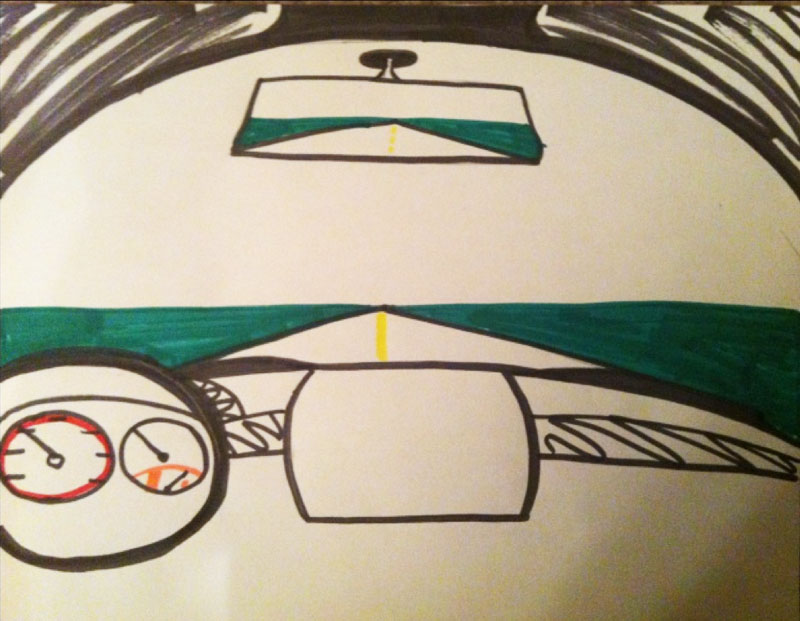
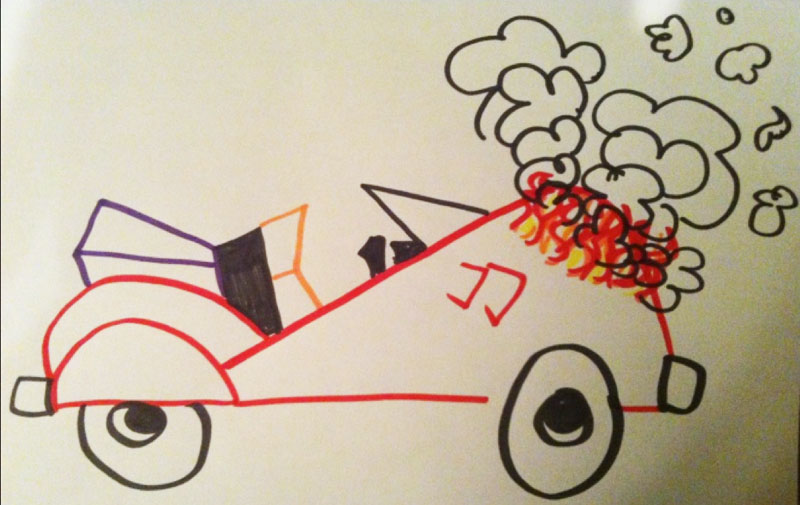
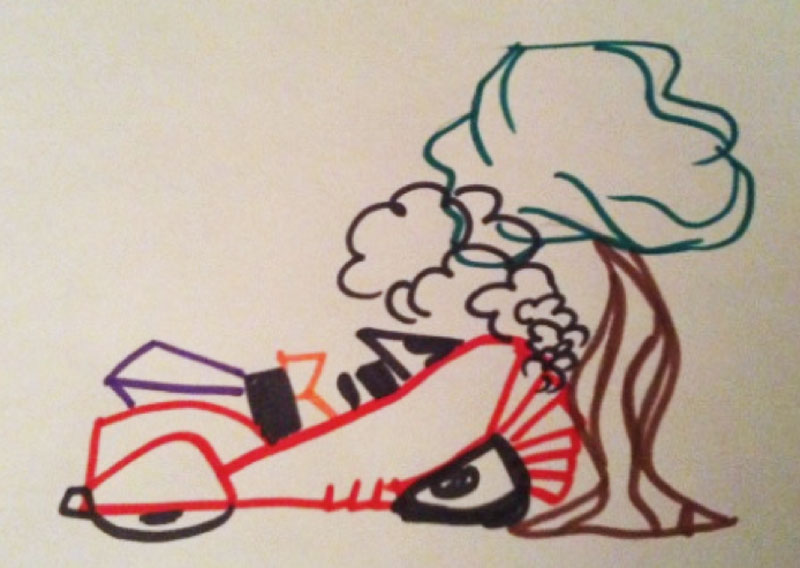
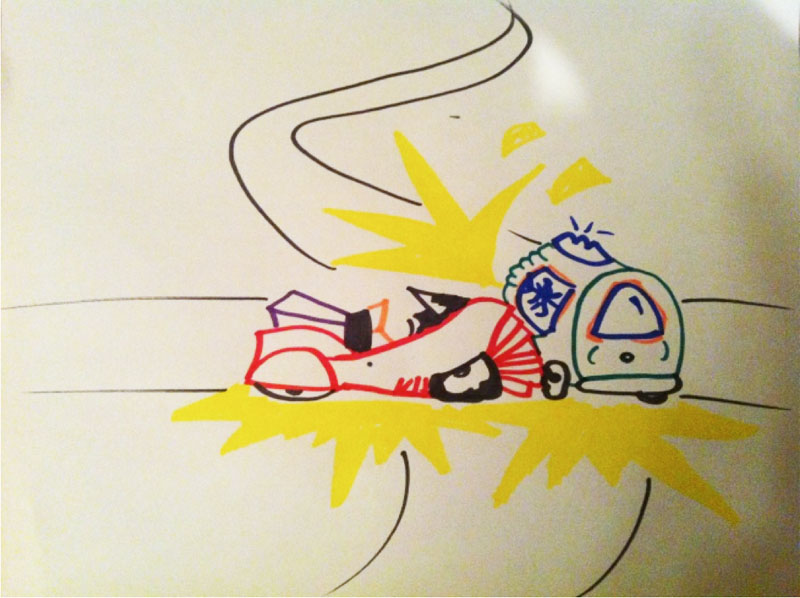

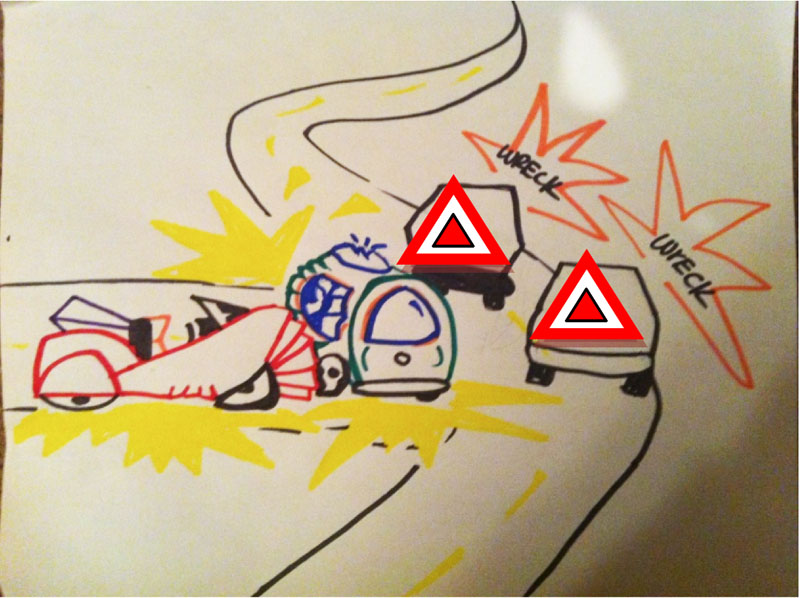


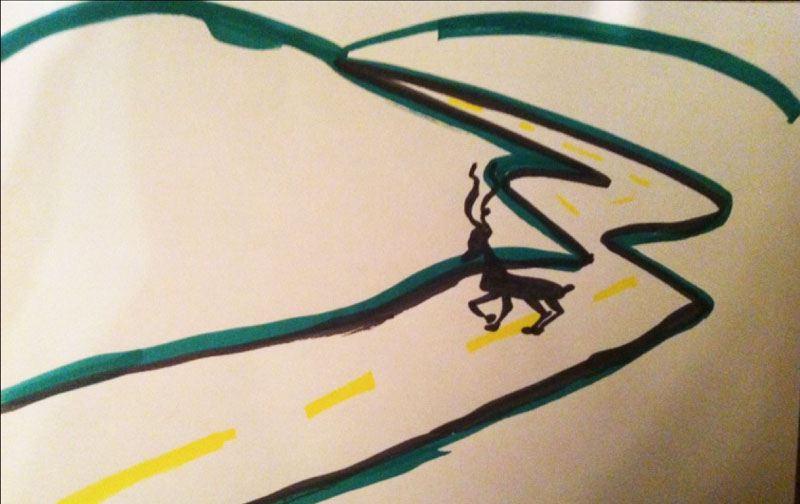
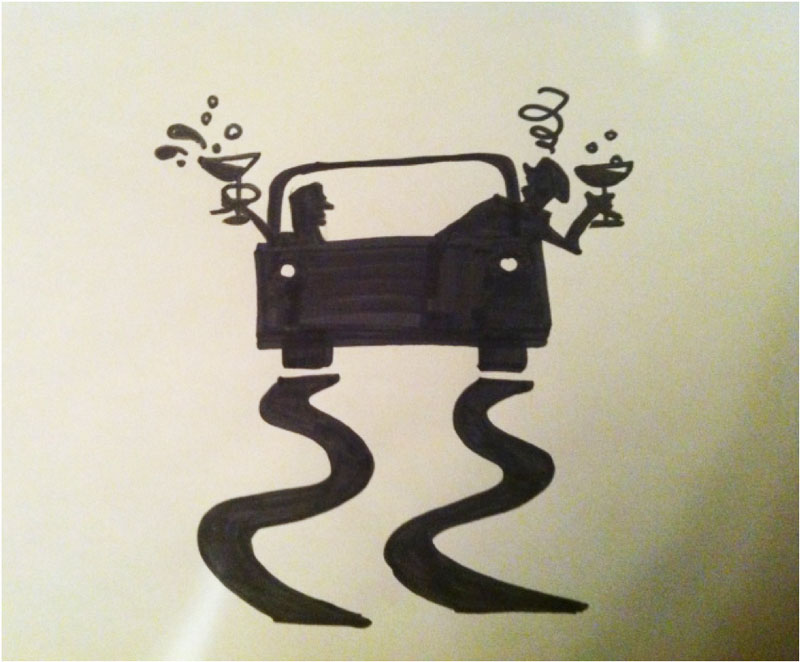
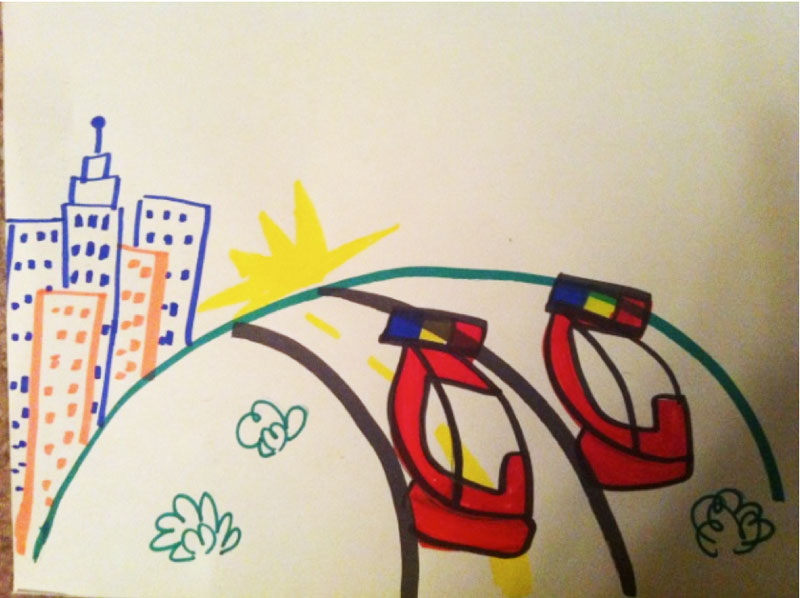
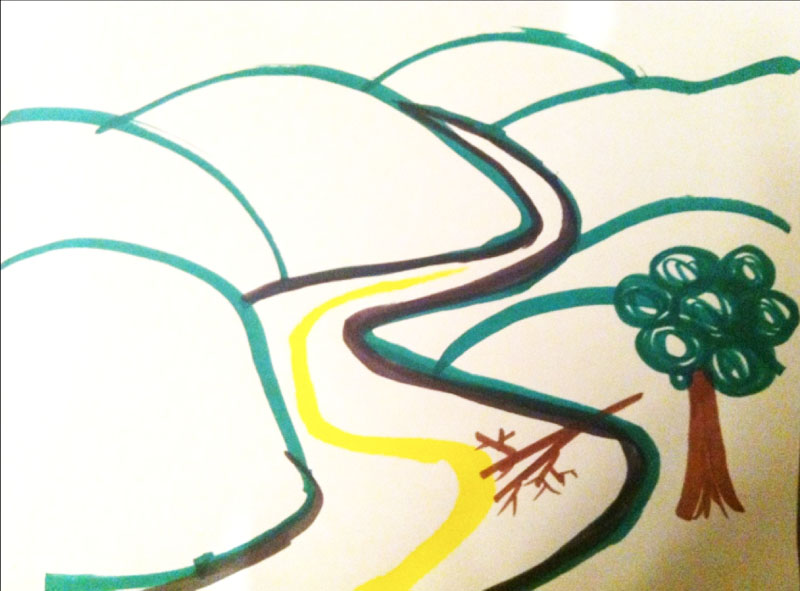
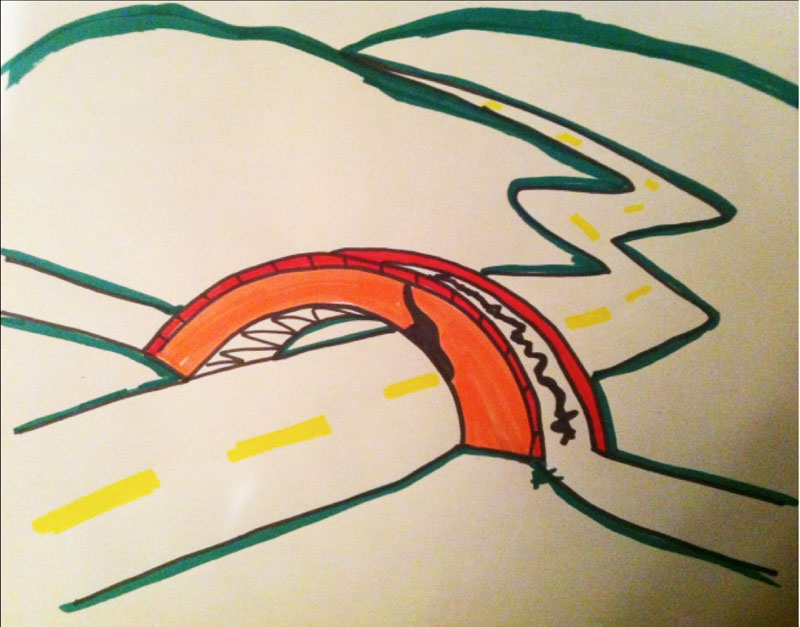
IDEAS: front cameras
airbags in back seat
seat belt warnings for back seat
blind spot sensors
usage of scent/shock/tone to awaken sleepy driver
make the back of cars signals as they pass a problem with or on the road
Make a key that senses intoxication
More sensors on the driver that can be picked up by the car:
Heart rate
body temperature
alcohol odor
facial muscles/movement
pupil dialation
sweat around the face/palms
eye gaze nystagmus
blood pressure
amylase in spit (tired)
9. More About the Problem
Department of Transportation
32,788 traffic fatalities in 2010 in the USA
Costs the US economy 9billion dollars a year
10. IDEAS
If a DUI is detected play a service announcement on the GPS system
11. Response Time tests that exist
Safe Key
has driver repeat the order of Led lights where three strikes and you are out, and a one hour lapse until the next trial